8 Wines to Bring to Your Next Tailgate Party
Pass the Pinot, please.
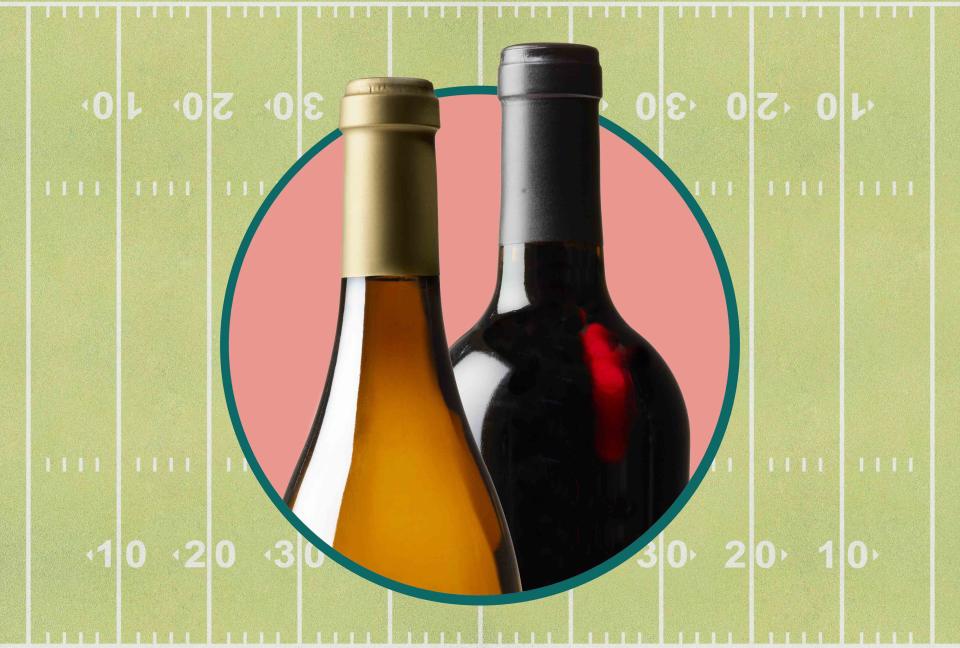
Food & Wine / Getty Images
You don’t have to know a first down from a touchdown to have a game plan for tailgating. While beer will always be a football staple, you’ll often get more bang for your buck when opting for wine. However, given the breadth of potential tailgate snacks, what style should you bring to your next pregame get-together?
There’s an easy guideline to follow when it comes to picking a wine that will go the distance come game time.
“The acid of your wine must be as high or higher than the food that you’re pairing it with. So if you’ve got something like a vinaigrette dressing — or just something that’s got vinegar in it — that means the wine that you’re pairing with it has to be that level of acid or higher,” said Amanda McCrossin, a certified sommelier and host of the Wine Access Unfiltered podcast. “But remember, the hardest thing is to figure out what you like. So even though these are ‘rules,’ this is something that you should only let guide you, not dictate how you eat and drink in life.”
Related: Pairing Steak With Rosé Is the Pro Move You Should Try — Here’s Why
Here, McCrossin breaks down the best styles of wine to pair with common tailgate foods, and her favorite bottles right now.
Fried foods and sparkling wine
Pairing wine with fried foods is a guaranteed winner because fried dishes, for the most part, are incredibly low in acid and work well with a wide variety of wines. Sparkling wines, as being one of the more acidic categories of wine, generally work best.
“When we’re talking about fried foods, we’re talking about super low acidity — we’re talking about dishes that really want acid. You can feel how that acidity just coats over, letting your palate feel super fresh after,” says McCrossin. “We all have fatty foods, knowing that we want something to brighten it up. This is why we add lemon to our cream sauce; we want to leave our palates feeling refreshed. With chips, it’s the same idea: fried foods. French fries, fried chicken, fried oysters, fried clams, fried everything. This all works in the same way.”
Gloria Ferrer Carneros Cuvée ($96)
When people think of sparkling wine, their thoughts often shift to Champagne, but fantastic sparkling wines are made the world over, as evidenced by this 10-year-old Sonoma gem.
“Gloria Ferrer Carneros Cuvée spent a whopping eight years on the lees, which means you’re getting something that feels really beautiful and bright,” says McCrossin. “It’s already got great, high acidity, but you’re also getting something that’s got tons of texture. And when I’m thinking about pairing food and wine, I’m really looking not only for the acidity but also for texture.”
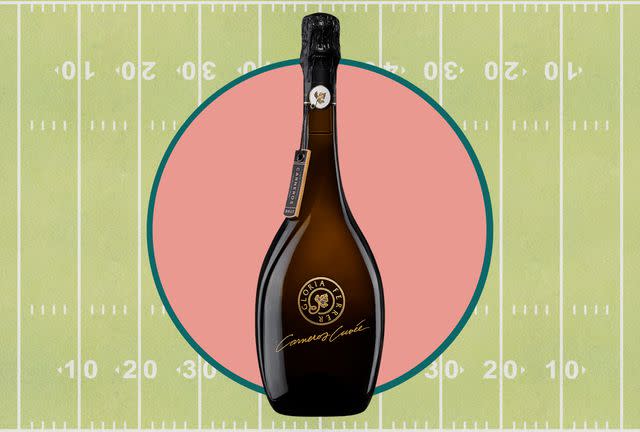
Food & Wine / Gloria Ferrer
Gloria Ferrer Carneros Cuvée 2013Cruse Wine Co. Eaglepoint Sparkling White Zinfandel ($30)
Cruse Wine Co. in Petaluma, California, is well-known for its sparkling wine, but creating one out of White Zinfandel truly sets this winery’s offerings apart.
“There are a few winemakers who are trying to bring White Zinfandel back, and Michael Cruse is arguably the best sparkling winemaker in the continental United States,” says McCrossin says. “He’s making an homage to White Zinfandel … in a pét-nat style. So, you get this sparkling wine that’s not quite as sparkling as something like Champagne, but you’re getting something that sort of frizzante, or semi-sparkling. It smells like a strawberry fruit roll-up and like sitting in the park with flowers. It’s so delicious. It’s creamy, and it’s got texture.”

Food & Wine / Cruse Wine Co.
Cruse Wine Co. Sparkling White Zinfandel 2022Spicy food and dry Riesling or a white blend
Riesling, a white grape native to Europe’s Rhine region, runs the gamut from sweet to dry. But it’s important to note that when pairing Riesling with tailgate foods — such as jalapeño poppers or spicy chicken wings — sweet clashes with spicy. When visiting your local bottle shop, ask for dry German, Austrian, or Alsatian Riesling.
Famille Hugel Classic Riesling ($29)
Famille Hugel, a member of Primum Familiae Vini, an association of generations-old wine families that includes Pol Roger and Marchesi Antinori, has been in operation since the early 1600s and is known for its crisp Alsatian Rieslings.
“Riesling is the most beloved grape of the wine world and the reason that we love it is because it’s one of the easiest to pair grapes with food on the planet. It works with so many different things. It’s aromatic, it’s got texture, it’s got acidity, and sometimes it has sweetness, but not always,” says McCrossin. “Riesling is one of my favorite things to play around with. When we’ve got difficult dishes to pair, we throw Riesling at it … [the style] also works really well with Indian, Thai, and Vietnamese dishes, where there are all sorts of spices that complement the wine.”
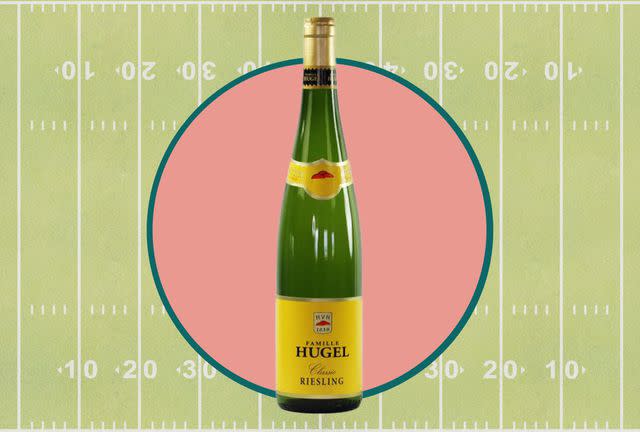
Food & Wine / Famille Hugel
Famille Hugel Classic Riesling 2021Massican Annia ($32)
Massican founder Dan Petroski left a New York media career in 2005 to work the vineyards in Sicily. Today, he’s known for producing white blends in the Italian style, perfect for a variety of food pairings.
“The other thing that you can do if you’ve got one of these more challenging dishes is you can throw a blend of few different grapes in a wine. It’s a great way to have multiple different pathways to finding a great pairing,” McCrossin says. “And the Massican Annia California white wine, it’s my favorite. This is a little homage to the California Italian varietals and is a blend of Tokai Friulano, Ribolla Gialla, and Chardonnay. This is a very common blend that you see in regions like Friuli.”
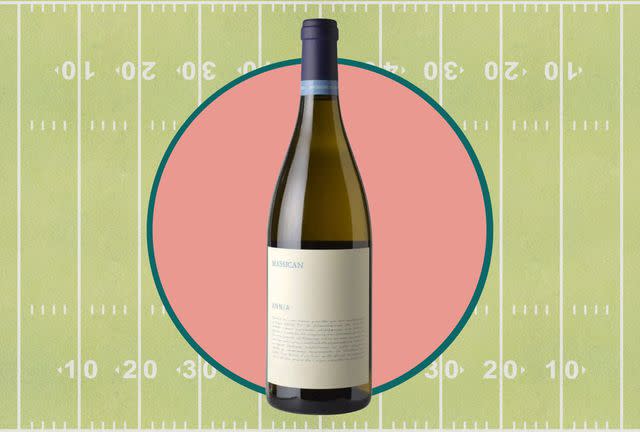
Food & Wine / Massican Wines
Massican Annia 2023Cheesy snacks and a light rosé
“Cheese is really finicky because it’s stealthily high in acidity. A lot of us don’t realize that because it’s milk acidity — lactic acid — and feels very creamy,” explains McCrossin. “A lot of the texture and some of those sweeter notes that we’re often getting from cheese really mask all of the acidity that’s happening.”
So, if your tailgate spread involves nachos, queso, mozzarella sticks, or any sort of cheese dip, you really can’t go wrong with rosé, which will likely be more acidic than your food. Think of it as the best of both worlds: acid and just a smidge of tannin.
“Rosé is the denim of wine,” says McCrossin. “It truly works with everything.”
Hirsch Vineyards Rosé of Pinot Noir ($45)
Hirsch Vineyards, near the Western Sonoma Coast in the Fort Ross-Seaview AVA (American Viticultural Area), produces beautiful wines from fickle weather that Pinot Noir grapes thrive on.
“If you eat fresh goat cheese, you will feel how much acid there is [in the cheese.] And what do we need when we pair highly acidic foods? We need acidic wines,” says McCrossin. “Now, here’s the problem. Most red wines don’t have a lot of acid. The acid spectrum basically goes … the highest acid wines are going to be sparkling wines, then it’s going to [be] white wines, then rosé, and then red wines.”
When in doubt? Pick based on the hardness of your cheese.
“Basically, sparkling to rosé is what you want for your softer and fresher cheeses,” she says. “And hard, aged cheeses typically pair well within the rosé to red wine range, because you want to try to keep them with the red wines that have slightly lower tannins.”

Food & Wine / Hirsch Vineyards
Hirsch Estate Rosé of Pinot Noir 2022Pork and Pinot Noir
Whether it’s pulled pork sliders, ribs, or sausages, some type of pork will likely feature in your tailgate extravaganza. And as McCrossin notes, when you’re trying to pair those dishes, it’s almost always best to shift to wines with tannins, which are derived mostly from grape skin and grape seed, and chemically work bind with the fat content and protein in meats.
Brewer-Clifton Sta. Rita Hills Pinot Noir ($35)
“There is this thing across the wine industry that we know as ‘Pork and Pinot,’” McCrossin says of Pinot Noir, which are classically lower in tannins and higher in acid. “When people ask me, ‘What should I pair with ham? What should I pair with roast pork?’ The answer is always pork and Pinot. Never forget it. Whenever you’re confused about something pork, go with Pinot. That’s what works.
“Pork is sort of on the lower echelon of how much tannin you need to be pairable; a rib-eye [contains] a lot more protein that you need to bind with tannin. This is why Pinot works super well with ham. It’s also the higher-acidity grape of most of your red wines.”
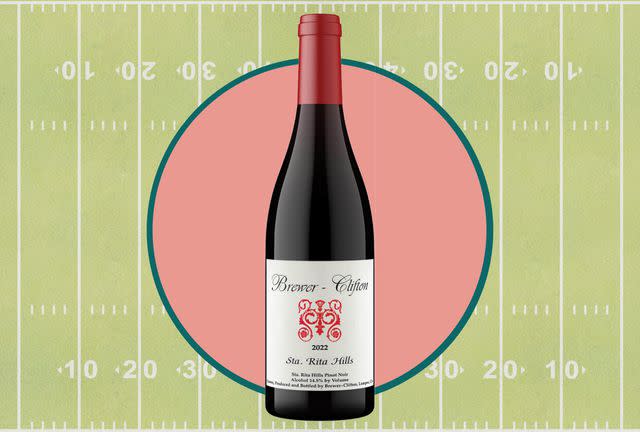
Food & Wine / Brewer-Clifton Winery
Brewer-Clifton Sta. Rita Hills Pinot Noir 2022Grilled meats and red wine or a dry Madeira
Sausages, brisket, and barbecues all have a depth of flavor that only something with at least a moderate amount of tannin can hold up to. “When we’re talking about proteins, we have to start moving into the territory that has tannin,” says McCrossin. “And tannin is really only found in your red wines. It’s what gives your wine a lot of texture, and it’s what you feel as astringency, or as if someone put a whole bunch of cotton balls in your mouth and sucked all the moisture out.”
Tenuta di Arceno Chianti Classico Riserva ($35)
Chianti Classico, which by law should contain a minimum of 80% Sangiovese, works particularly well with barbecued, braised, and grilled meat, or any dish that’s on the heavy or saucy side.
“Whenever someone’s like, ‘I’m having Bolognese,’ or having red sauce pasta or a ragu. There’s no question in my mind that it has to be Chianti Classico,” says McCrossin. “The acidity of this wine works with the acidity of the sauce, [and] the sweetness and tartness of the tomato … The other reason that I love doing something like a barbecue brisket with this is that you’re really highlighting some of the more subtle barbecue flavors that are going on.”
Here’s a trick that’ll help you spot a Chianti Classico immediately. Turn the bottle over and check for an image of a black rooster. If it’s there, it’s Chianti Classico, which McCrossin notes is “very different” from regular Chianti. “These are very high-end, very well-made, very special versions of Chianti,” she says.
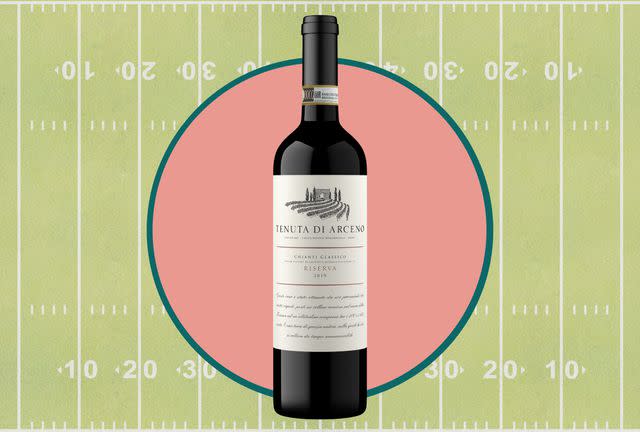
Food & Wine / Tenuta Di Arceno
Tenuta Di Arceno Chianti Classico 2019The Rare Wine Co. Charleston Sercial Madeira ($50)
While the time-tested notion of pairing red wine with meat holds true because of its tannins, it isn’t the only option. Dry Madeira, a fortified wine made on the tiny archipelago of Madeira, off the southwest coast of Portugal, also pairs well with the deep flavors of a Southern brisket, sliders, and other tailgate meats.
“When you taste Madeira, which is dry, it has what’s called ‘perceived sweetness.’ All those caramelly nutty flavors that you’re experiencing? Those are free from any sort of sugar,” McCrossin says. “It’s just your brain tricking you into thinking there’s sugar there. We’re so used to caramelly things having sugar, so our brains go, ‘Yeah, this is obviously sweet.’ But it’s not.”
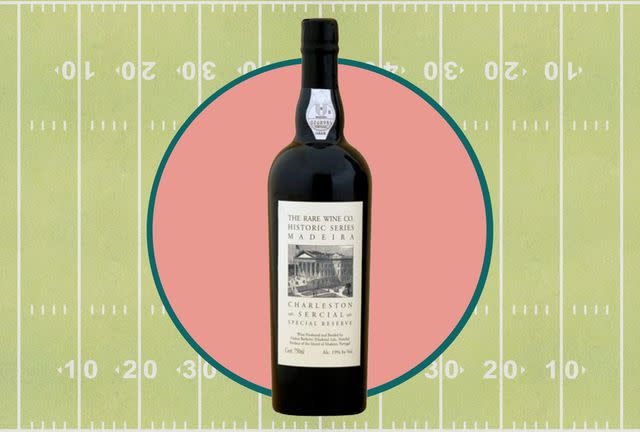
Food & Wine / The Rare Wine Co.
The Rare Wine Co. Historic Series Madeira Charleston Sercial Special ReserveFor more Food & Wine news, make sure to sign up for our newsletter!
Read the original article on Food & Wine.


